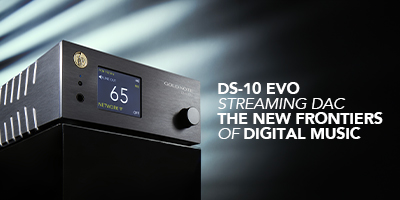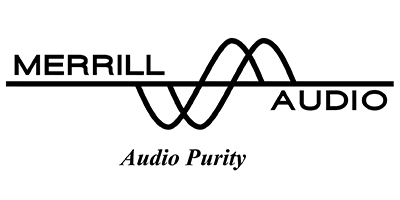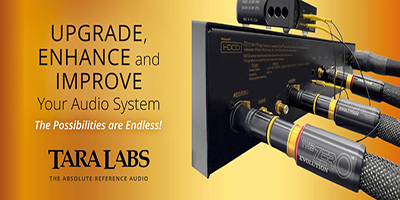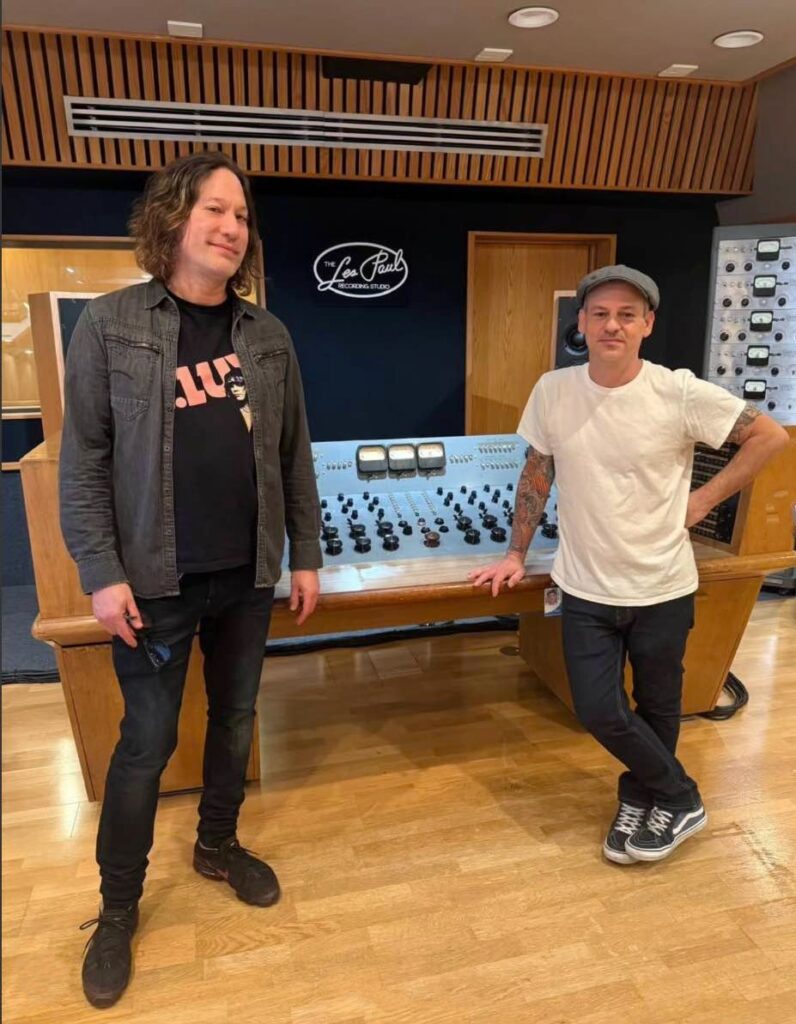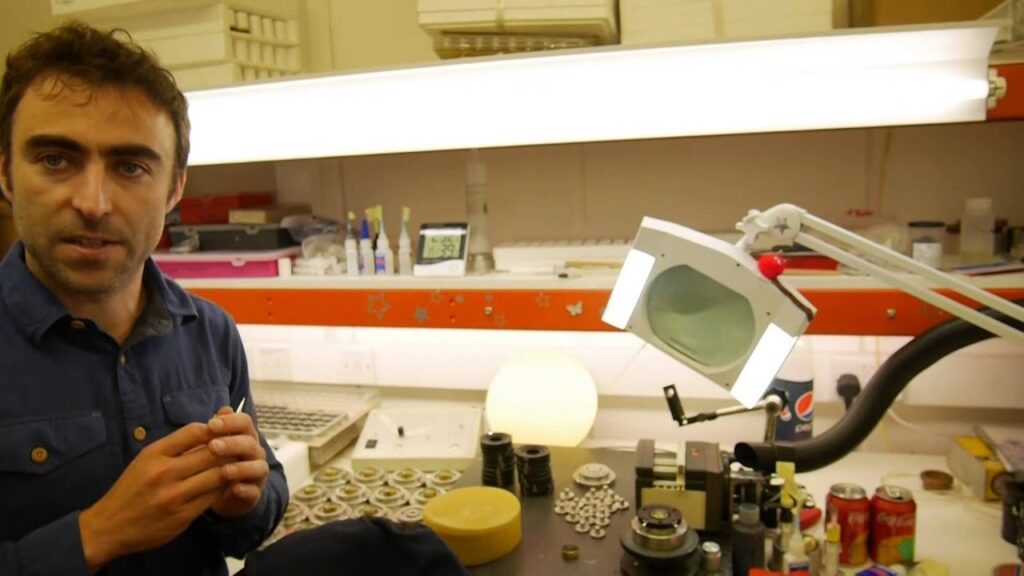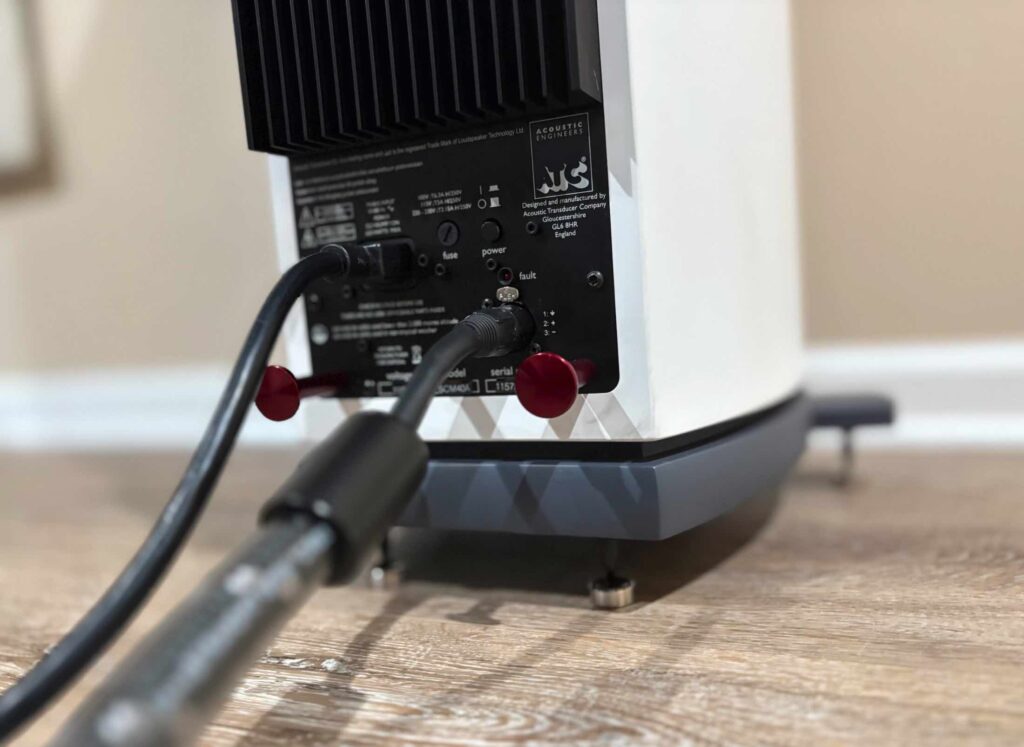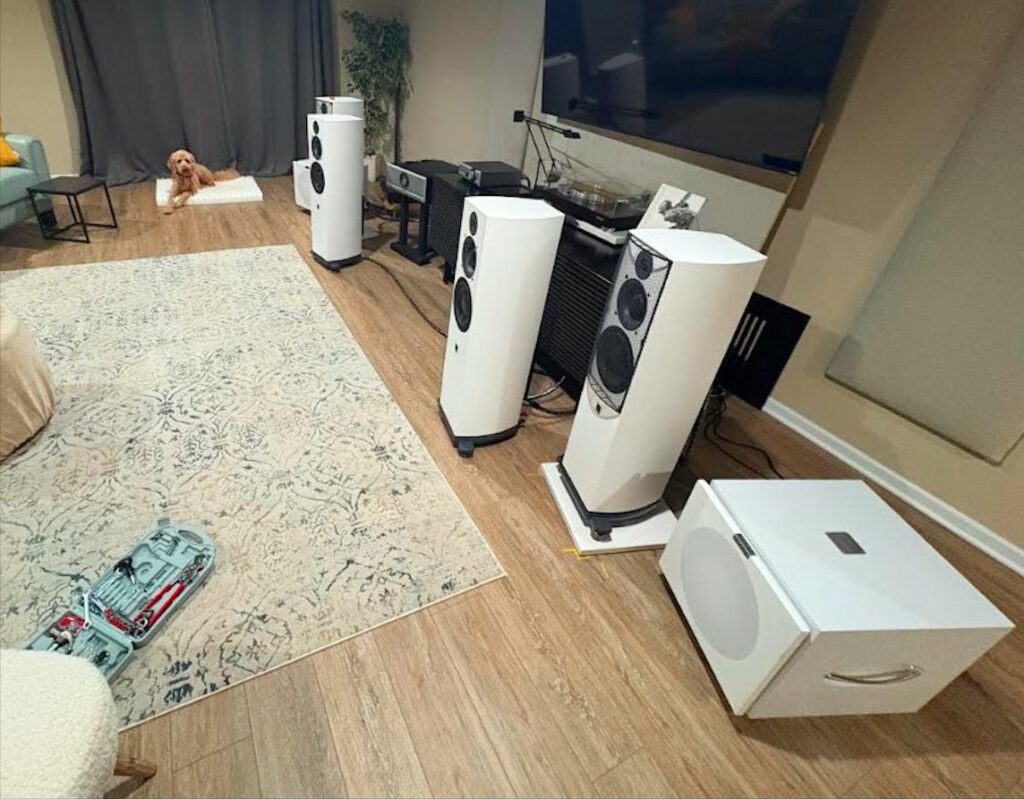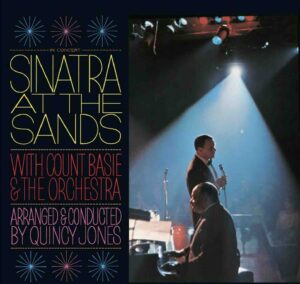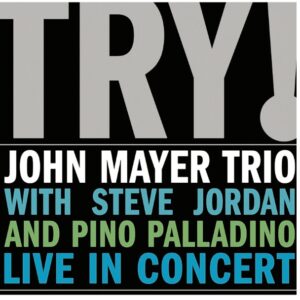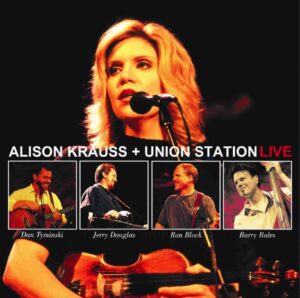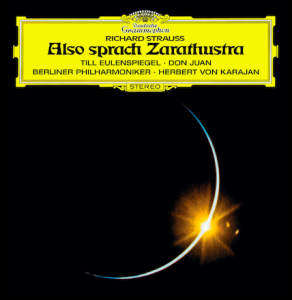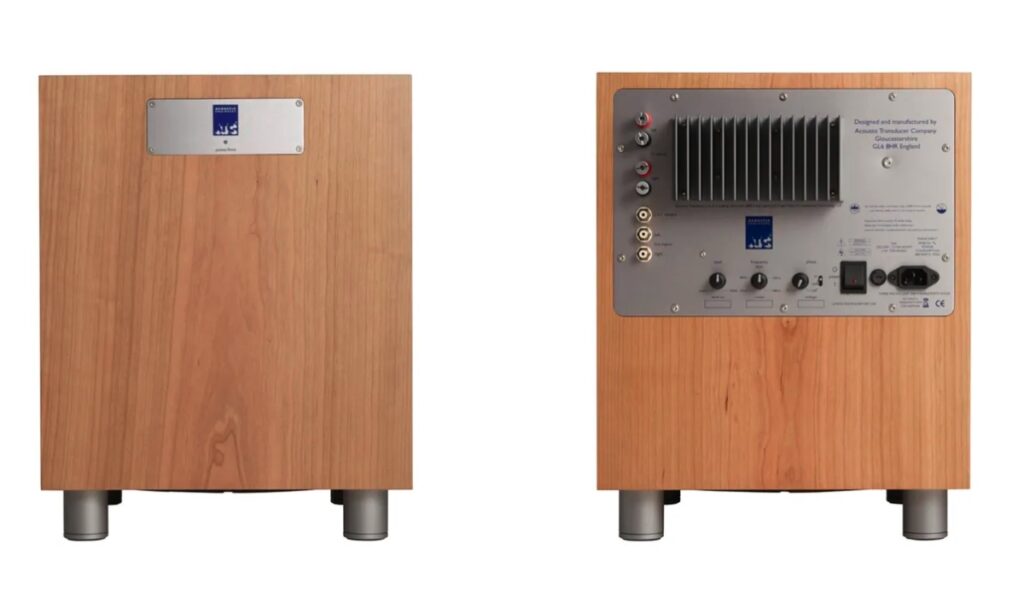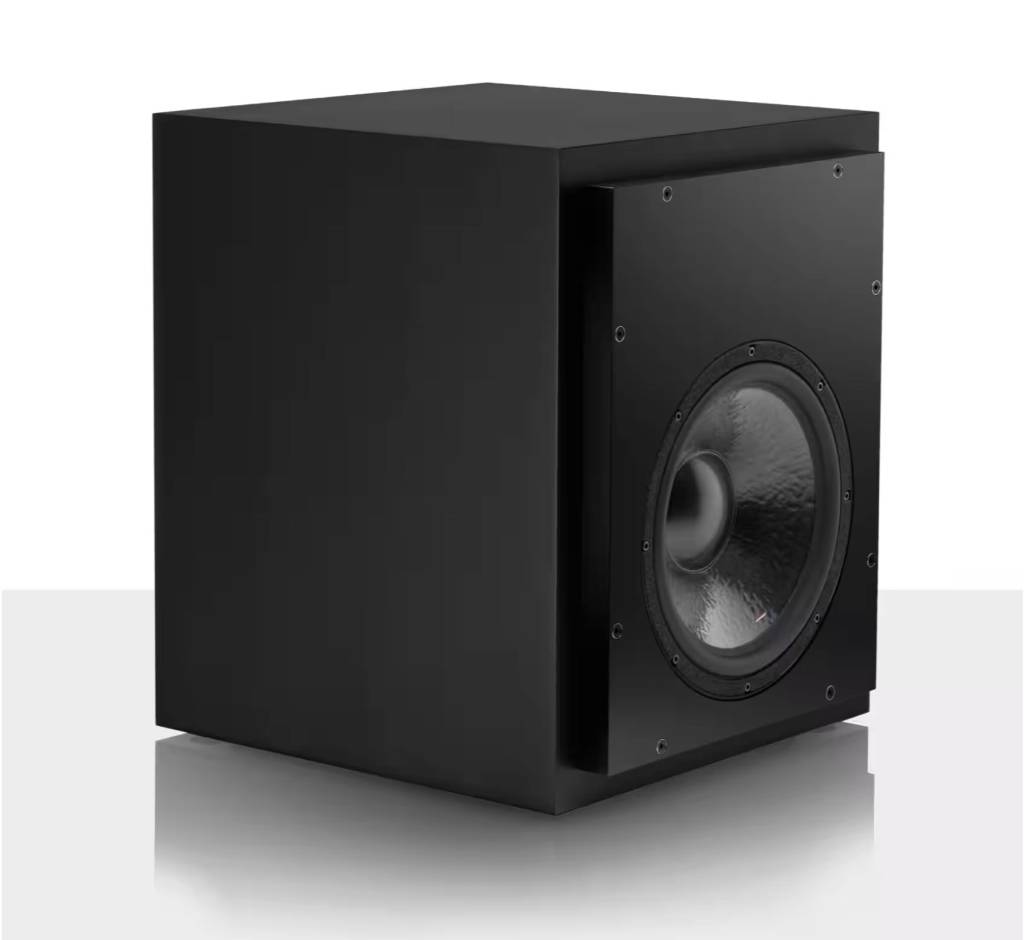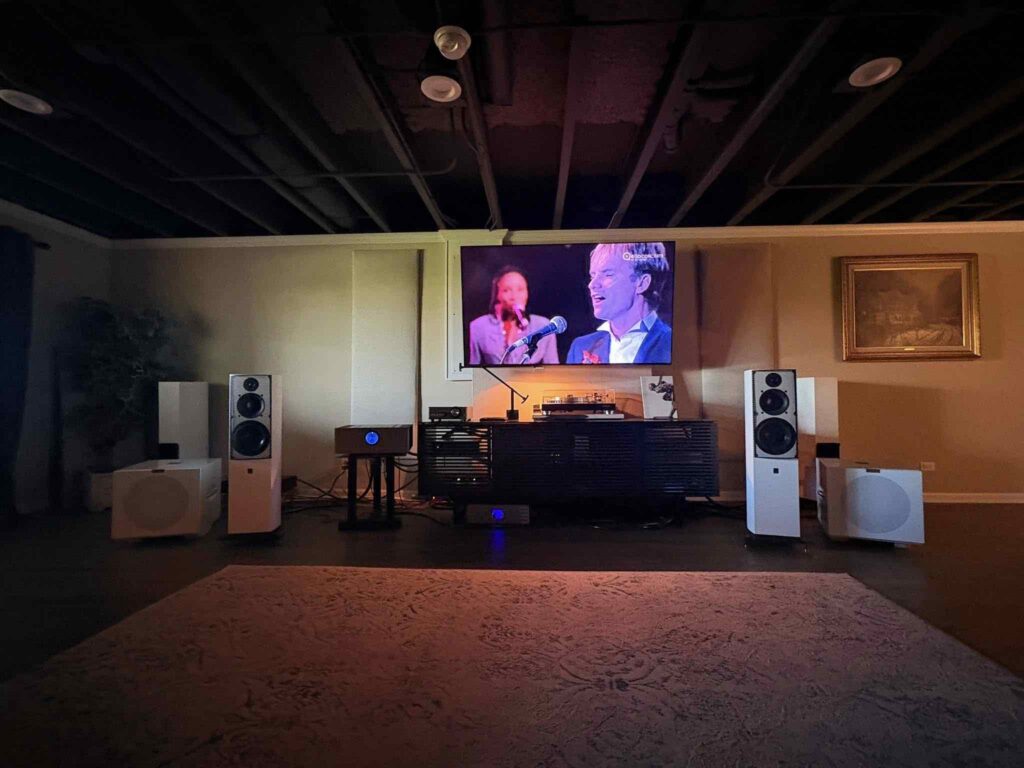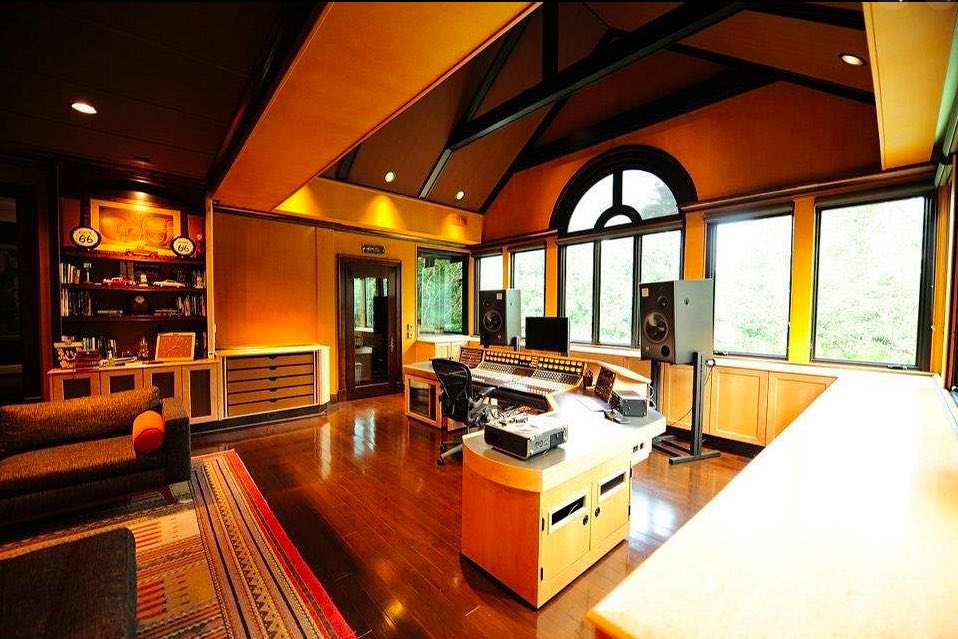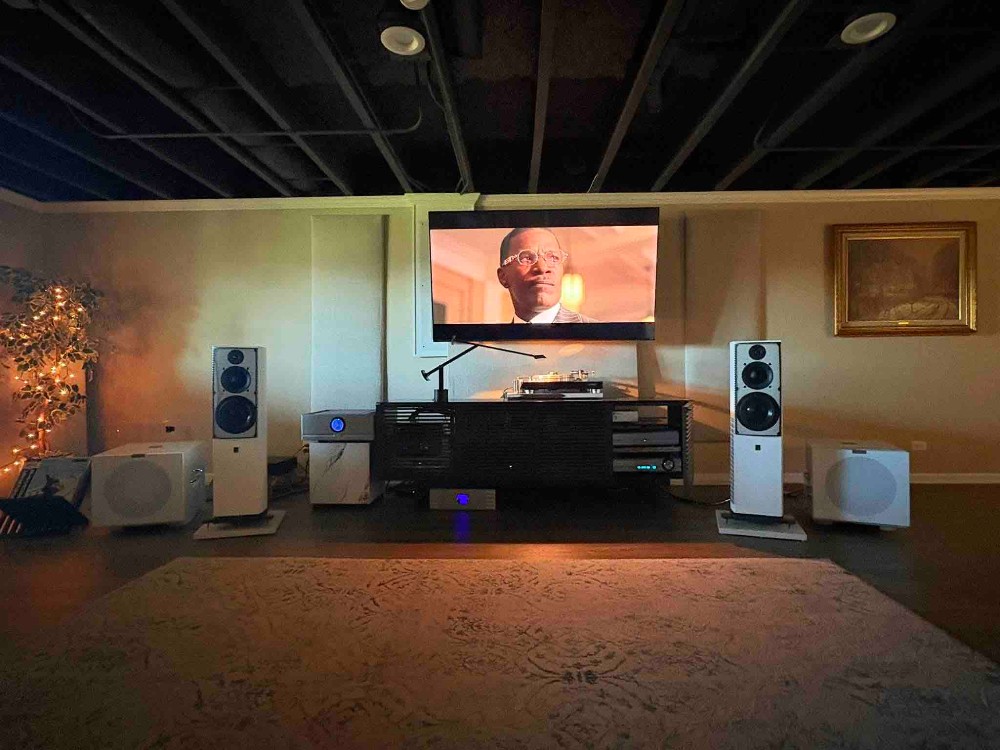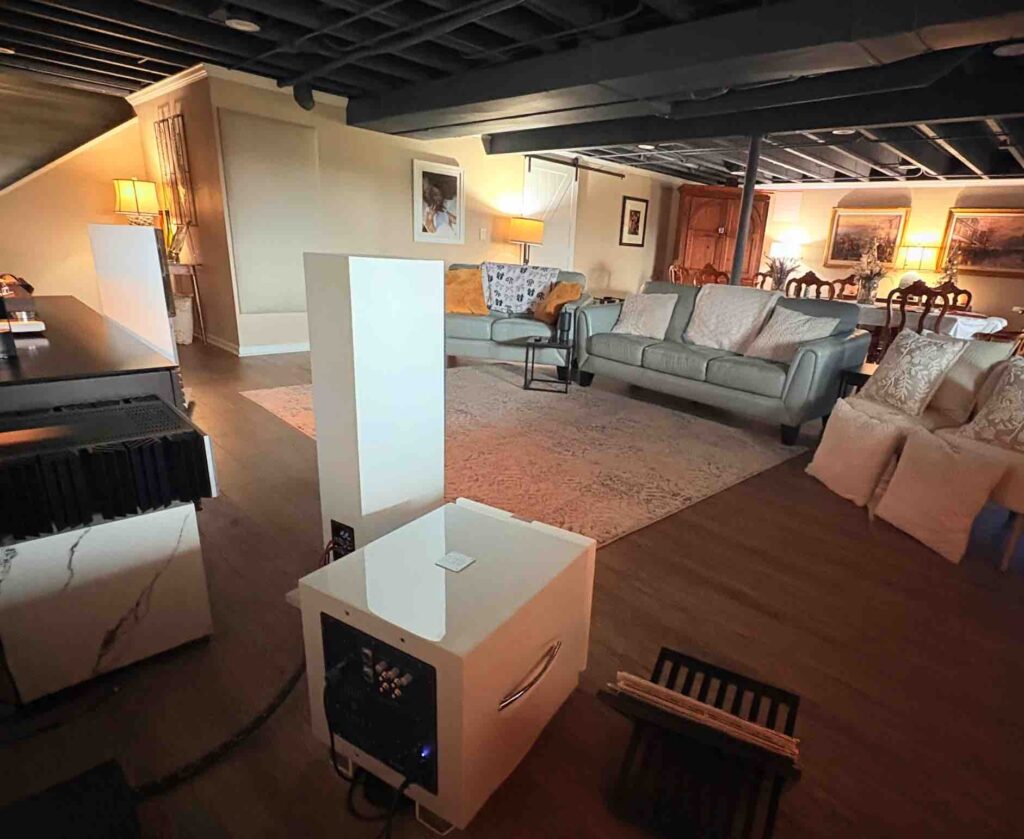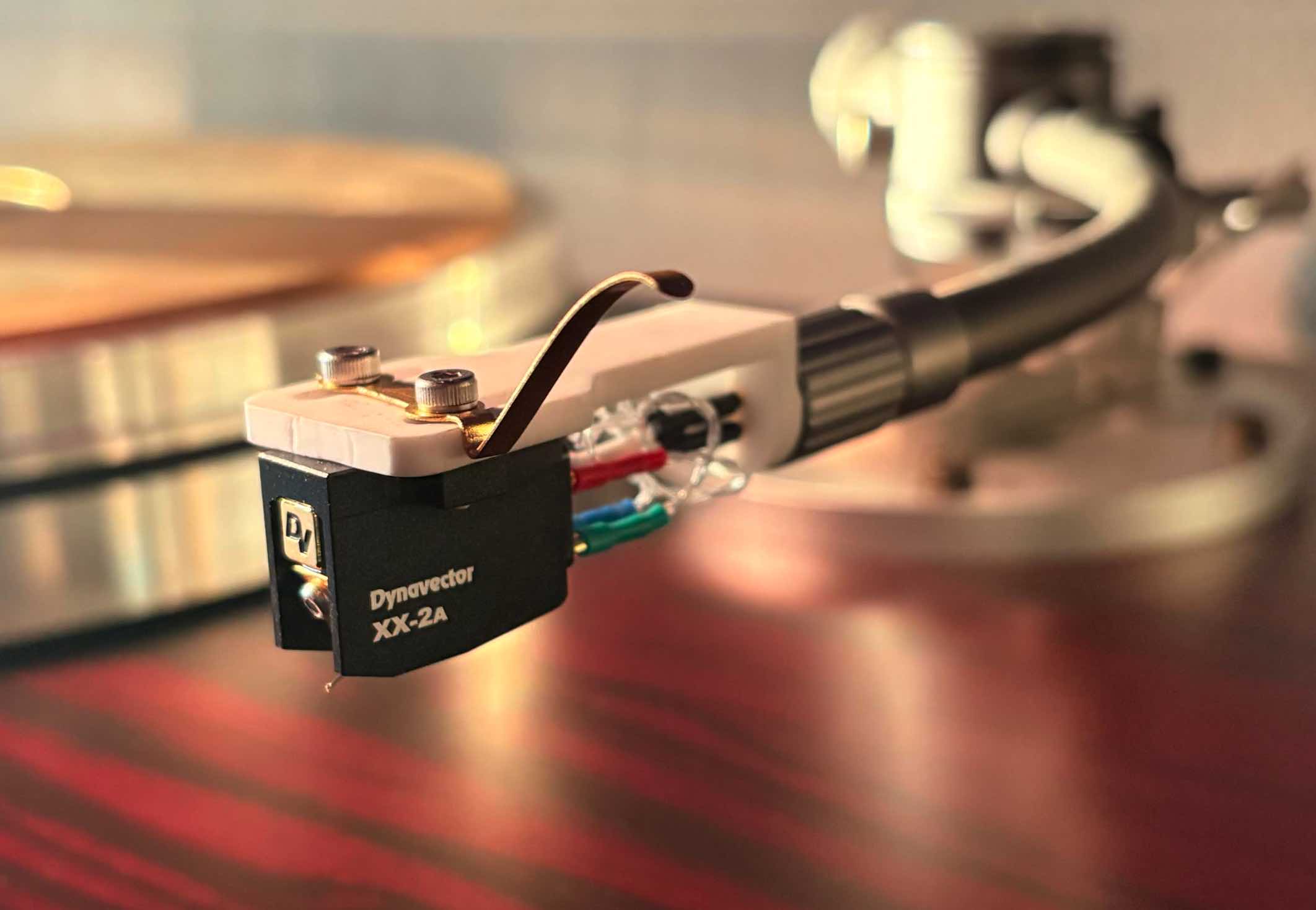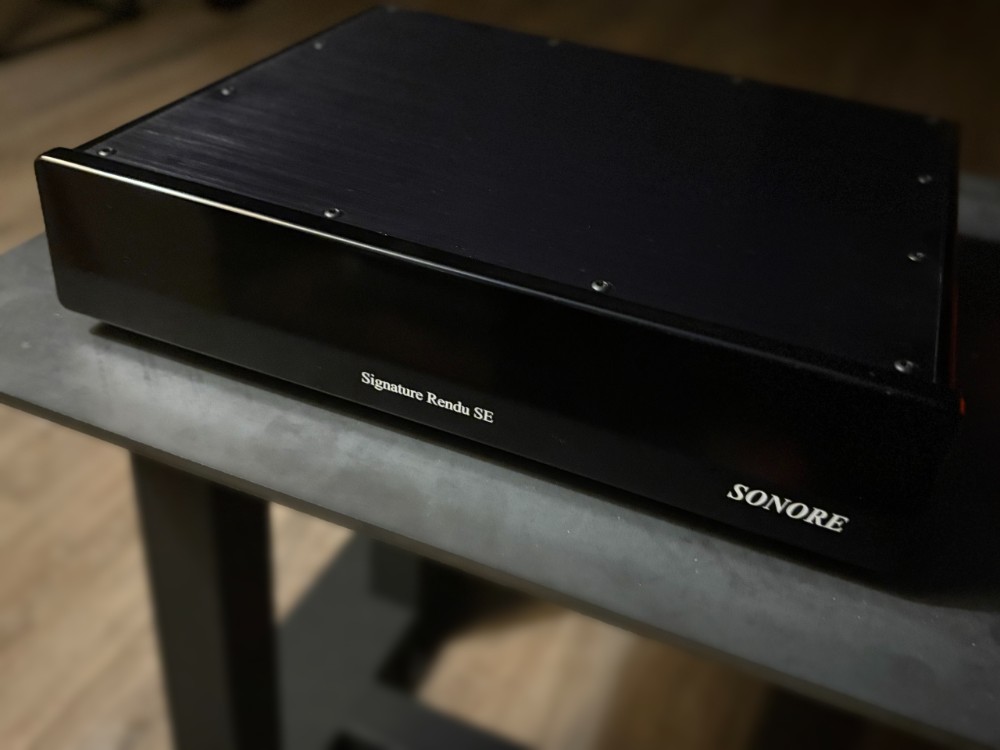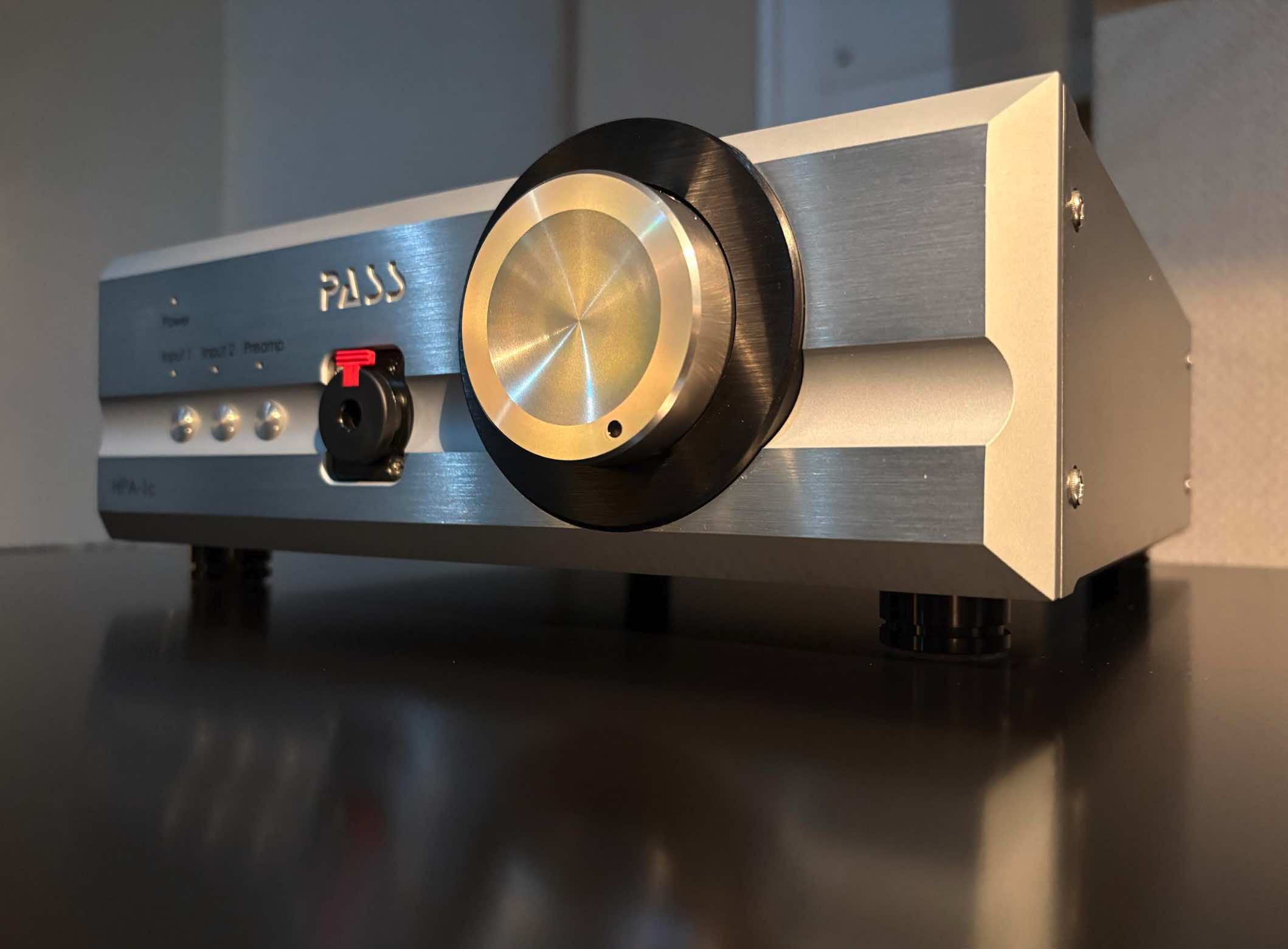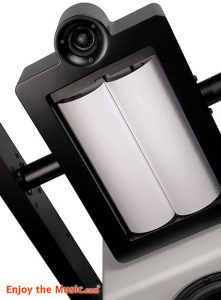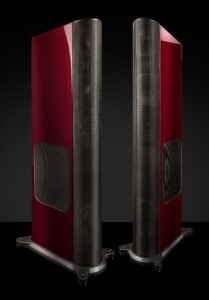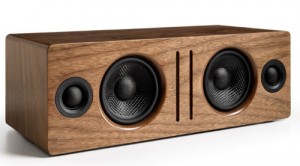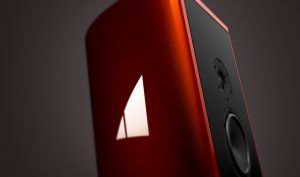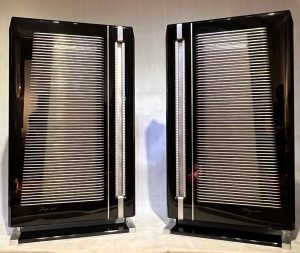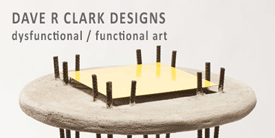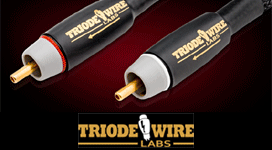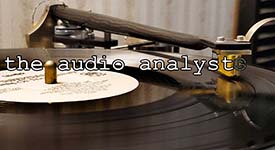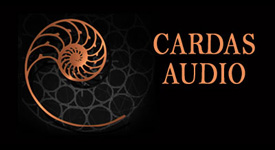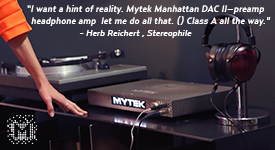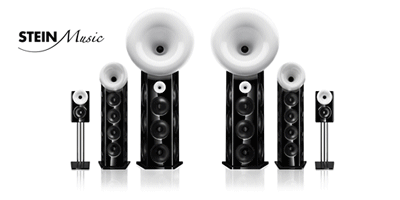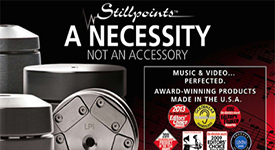Backdrop loudspeaker drivers image courtesy of ATC
Like a surgeon's scalpel, the ATC SCM40A loudspeaker is a serious instrument, deftly cutting through sinew, fat, and bone to the heart of music with surgical precision and clarity. A three-way floor-standing model at just under 40 inches tall, it is unobtrusive and remains at the top of the Entry Series line of consumer range speakers by a company renowned in the music industry for their legendary studio prowess. A cavalcade of recording artists like Pink Floyd, Tom Petty, Mark Knopfler, Lenny Kravitz, Vince Gill, The National, T-Bone Burnett, and Diana Krall use ATC speakers in making their hits, and their monitors are appear in top-tier recording studios such as East West Studios in Los Angeles, Blackbird Blackbird Studios in Nashville, House of Blues in Nashville/LA, and Sheffield Labs Founder Doug Sax's Mastering Room. (Lonemountainaudio.com)
In over 30 years of private listening, running sound at church, or side hustling as a mobile DJ, I rarely used active loudspeakers. Occasionally, they'd surface at coffee shops, restaurants, inexpensive weddings, or home audio forums—the latter of which often drew derision from audiophile snobs, who generally dismissed them as lowbrow, bastardized utilitarian derivatives from the pro audio sector. Thus, when I surveyed the ATC SCM40 passive loudspeakers in online discussion boards, I was surprised to hear how many people actually preferred the sound of their active versions, the ATC SCM40A loudspeakers. (You can read my review of the ATC SCM40 passives, which I loved so much I purchased the review sample, HERE.)
Hence, my curiosity was piqued when Leland Leard, Chief Business Development Officer of Lone Mountain Audio their U.S. importers asked me to review them. Founded by Brad Lunde, Lone Mountain Audio handles ATC's consumer division while Lunde's Transaudio Group focuses on ATC's pro audio market.
The ATC Edge
For the unaware, the Acoustic Transducer Company (or ATC, also known as Loudspeaker Technology Ltd.), is located in the beatific Cotswolds countryside community, Stroud, Gloucestershire, United Kingdom. Nestled amongst lush green farmlands, rolling hills, quaint villages and historic buildings, ATC is one of the leading players in pro audio production, with a huge list of clientele, including Abbey Road Studios, Sony Music, and Telarc, and their products are installed at some of the world's most prestigious multi-channel studios and auditoriums.
It's interesting to note that Acoustic Sounds, Inc., a popular business that specializes in the production and sale of high-fidelity audiophile vinyl LPs, Reel-To-Reel album reissues, SACDs, and other related products, use a pair of ATC SCM150 active loudspeakers when mastering new pressings and comparing them to the original recordings.
Leland recently spoke with Chad Kassam of Quality Record Pressings, Acoustic Sounds, and Analogue Productions fame. Chad was praising ATC when he said, in his signature Louisiana drawl, "I've got active 150's in my office where we QC pressings and we've got a set in Doug Sax's Mastering Lab. We understand why Doug used those as his reference, and we do the same."
Photo courtesy of @robclores on Instagram
Also of interest is the new Les Paul Recording Studio in Los Angeles, California. It features a set of ATC SCM50ASLs and two C4SUB Mk2s for the restoration and preservation of Les Paul's original recordings. Furthermore, the studio is a re-creation of Paul's original home studio built in the garage of his Hollywood home and is available for musicians who want to record on Les's original eight-track recording console—the same one used by Les to create his remarkable recordings.
Additionally, the studio is being used by recording schools as a teaching tool. Students are exposed to the mastery of Les Paul and the recording techniques he invented. They get to experience the challenges of multi-track recording on the very console where multi-track was invented. Bottom line, it provides visitors with a unique hands-on museum experience.
ATC's engineer from their factory in England, Richard Newman, holds the robust SM75-150S soft dome midrange driver (the S model is a higher spec version that goes into their pro line and higher-end consumer models, like the SCM50s on up that share similar characteristics) at Audio Expo North America (AXPONA) 2025
At the heart of it all, ATC Engineer, Richard Newman, says is their unique, hand-built midrange dome. "Its invention enabled the reproduction of piano at realistic listening levels while maintaining low distortion and timing detail, for example," he says.
"The selection of a soft dome versus a hard one was for a specific reason: a hard dome deals with some resonances by pushing them into higher frequencies, yet some irritating artifacts remain. On the flip side, their softer dome midrange features highly damped moving structures, so the energy is removed from any mechanical resonances, resulting in low coloration. And when driving them hard and loud, resonances remain damped and completely controlled."
"Concentrating on constant performance and linearity with volume increases, ATC speakers can do the gymnastics required for high dynamic range reproduction without adding distortion," Newman asserts.
Their midrange drivers are very efficient from 380Hz to 3.5kHz. "There's a hell of a lot of energy there," he adds. (Their bass drivers handle lower frequencies up to 380Hz.)
An engineering driven company that prioritizes performance over aesthetics, they also employ ATC woofers and mid-range drivers featuring oversized, powerful magnet systems designed to handle high power and reduce third harmonic distortion by 10 to 15 dB between 100Hz and 3kHz resulting in clearer, a more detailed delivery with minimum distortion. (www.vintageking.com)
Ben Lilly, ATC Technical Sales Manager (still image courtesy of Audio-Video PL YouTube Channel)
But Why Actives?
ATC's Technical Sales Manager of the last 10 and a half years, Ben Lilly, who served 12 years previously as a transducer engineer in ATC's Research and Development team, sums up the differences between passive and active loudspeakers in his following treatise from 2024.
Passive loudspeakers employ crossover filters that only use passive components: capacitors, inductors, and resistors.
They can attenuate the signal, and whilst amplification is achievable over limited frequency bands, it is only via resonant ringing circuits which are undesirable. The position of the filters within the signal chain is between the power amplifier(s) and loudspeaker drive units, so they operate at high level and are exposed to high voltages and currents, resulting in components that are physically large and with high power handling. The filters are loaded with relatively low impedances, so the component capacitance and inductance values are high. The combination of high-power handling, large size and high component value results in expensive parts.
Active loudspeakers employ active (powered) crossover filters that can attenuate and amplify the signal.
They may also include filters that affect the phase/timing of the signal plus limiters to ensure amplifiers do not hard clip. The position of the filters within the signal chain lies between the preamplifier and the power amplifiers. Their nominal operating level is around 1 volt, and the filters operate at relatively high impedance, resulting in filter components of modest size and value. Each loudspeaker frequency band has its own dedicated power amplifier; typically, two in a 2-way system and three in a 3-way system. Small to medium sized active loudspeakers typically feature all the electronics within their loudspeaker enclosure. Larger systems featuring more powerful amplifiers may have a separate enclosure(s) for the electronics.
While it is possible to design a high-performance loudspeaker using passive components—and ATC make some outstanding passive systems—an active design will always outperform its passive equivalent due to many benefits. These are listed below:
More Accurate Crossovers
1.1. Typical loudspeaker loads—or impedances—found in commercial products are 4, 6, and 8 ohms. When designing passive crossover filters, the component choices are based on the load the crossover filter ‘sees' which, in the case of a passive loudspeaker, are the loudspeaker drive units. Herein lies a problem as the load a loudspeaker driver presents to a passive filter varies with both frequency and temperature. When the listening volume and amp power increases, so does the driver voice coil temperature. This results in a passive filter with a crossover point and damping factor that changes according to the listening level and input power and results in a loudspeaker system which has a different voicing at lower vs higher volume levels.
Conversely, the performance of an active filter does not change with listening level and input power as they are not connected directly to the loudspeaker drive units. Instead, they are connected to the active speaker power amplifiers which provide a fixed load and consistent listening experience, regardless of volume level.
1.2. The phase response of both passive and active crossover filters is tightly linked to the filter frequency, order and Q-factor. Modifying any of these filter parameters will also change the phase response, which may result in an undesirable phase difference at the crossover point. Further subsequent changes to improve the phase response will lead to compromises elsewhere.
Within an active system we can include additional all-pass filters. These are circuits which pass all frequencies equally but change the phase relationship between different frequencies, therefore offering the ability to optimize the phase response through the crossover region. With a well-engineered active system, the crossover filter and resulting active loudspeaker system will have a superior phase response to the passive equivalent, with an improved tonal balance, and far superior imaging.
Wider Practical Choice of Crossover Type/Shape
The large value, high power components used in passive crossover networks are bulky and expensive. As a result, if the ideal filter choice is of a more complex design, practical space and cost considerations may lead to a compromise.
Once the choice has been made to implement an active crossover, increases in circuit complexity result in modest space and cost increases, and the final design is unlikely to be compromised, resulting in higher performance and a better listening experience.
Greater Dynamic Range
Passive crossover filters are driven by power amplifiers and operate at ‘high level' and low impedance. Even if a designer is willing to ignore practical limitations in relation to physical size and cost, the large high-power inductors required for passive filters will have series resistance that results in a reduction in system efficiency (power dissipated as heat in the inductor).
Active crossovers filters are located before the power amplifiers and operate at line level loaded with relatively high impedances. As a result, the circuits offer virtually zero loss, and an active loudspeaker system will offer improved dynamic range when compared to its passive equivalent.
Ideally Matched Amps and More Efficient use of Power
Amplification for passive loudspeaker systems is usually selected based on customer and retailer experience alongside the loudspeaker manufacturers published data. Due to a lack of clarity, amplifiers can easily be under specified resulting in poor performance or over specified resulting in far higher costs.
As an active loudspeaker system is designed and engineered by a single company with the greatest level of insight into the requirements of the loudspeaker; all aspects of the amplifier performance can be perfectly matched. Not only that, but as power is not wasted in passive crossover networks, the designer has the option to use smaller amplifiers or alternatively, to offer greater dynamic range.
The ATC SCM40A active loudspeakers are available in Cherry, Black Ash, Satin Black, and Satin White. The Cherry and Black Ash options are real wood veneers, while the Satin Black and Satin White are painted finishes.
Improved Frequency Response and Stereo Matching
Passive loudspeaker frequency response and stereo matching relies on drive unit and crossover component tolerances. The adjustment of production units to match a ‘golden reference' would require the replacement of large, soldered components. In practice, this is too difficult and time consuming.
Within an active system, it is simple and cost effective to implement individual gain trims for the two, three or four amplifiers involved. This allows fast and effective fine tuning of the loudspeaker response, ensuring that active systems have better stereo matching, a flatter frequency response and are more enjoyable to listen to.
Better Driver Control
Any electrical resistance that exists between an amplifier output and drive unit input reduces an amplifier's damping factor and its ability to control the drive unit motion. A conventional passive loudspeaker features series inductors within the crossover circuit and, typically, 3 meters (10 feet) of speaker cable between the amp output and driver input. Both resistances reduce driver control and, at worst, can result in undesirable ringing/resonance over certain frequency bands.
An active speaker employing active crossover filters and on-board amplifiers results in the best possible driver control, as there is only a short length of speaker cable between the amp output and driver input.
Lower Intermodulation Distortion
Passive systems are usually driven by a single amplifier that operates over the full audio band. The amplifier is burdened by the heavy workload of low frequency reproduction whilst also having to amplify the subtle details in the mid and high-frequency range. The high power demands from the low frequencies can cause the amplifier to clip, generating subsequent loss in quality in the higher frequency bands.
Not only must the amplifier drive the speaker, it must also act to damp any voltage generated by the driver(s) in operation. High-performance amplifiers are designed to have a very low output impedance and subsequent high damping factor, so their output is affected as little as possible by voltages generated by the loudspeaker drivers. But they must also contend with intermodulation distortion caused by nonlinearities or time variance in the signal processing, which produces additional components (spikes) in the frequency response. Inserting a resistive passive crossover between the driver and amplifier is likely to increase intermodulation distortion.
Active systems feature multiple amplifiers dedicated to each frequency band, and as the amplifiers are located after the crossovers, they operate over a limited bandwidth. In addition, the amplifiers have the lowest possible resistance connection to the drive units, leading to optimal damping of reverse voltages generated by the drivers. This reduces intermodulation distortion, and, in comparison to a passive system (even a bi or tri-amped passive system) an active system will show 15-to-20dB lower intermodulation distortion, resulting in greater clarity and less listening fatigue.
Better Value
For a very long time, improvements to a HiFi system have relied on small incremental improvements to separate components within a system, whilst often overlooking the fact that the loudspeaker (and its environment) are the weakest elements.
Active loudspeakers offer a significant improvement in performance to the weakest link in the signal chain, resulting in outstanding value. In addition, because an active system is designed, engineered, and manufactured by a single company into as compact a package as the design allows, cost is saved on electronics case work and packaging. The manufacturer can invest in real performance enhancing changes or pass the saving on to the customer.
(Ben Lilly, ATC, February 2024)
"In an active loudspeaker system each driver has its own power amplifier... (which) gives maximum control over the mechanical motion of each driver and most efficient use of amplifier power," said Siegfried Linkwitz, the late Linkwitz Lab speaker designer. "Drivers of different sensitivities (SPL/W/m) are easily combined, while with passive crossovers the driver of lowest sensitivity determines the loudspeaker's overall sensitivity. Amplifier power has to be wasted in the process." (Audiosciencereview.com/forum)
Specifications
- Drivers: HF ATC 25mm dual suspension Tweeter, Mid 75mm ATC Soft Dome, LF ATC 164mm SC
- Matched Response: ±0.5dB
- Frequency Response (-6dB): 48Hz-22kHz
- Dispersion: ±80° Coherent Horizontal, ±10° Coherent Vertical
- Max SPL: 112dB
- Crossover Frequencies: 380Hz & 3.5kHz
- Input Connector: Female XLR
- Input sensitivity : 1V
- Filters: 4th Order critically damped with phase compensation.
- Overload Protection: Active FET momentary gain reduction.
- Fault Protection: DC fault protection and thermal trip. Fault indication on rear panel mounted LED.
- Amplifier Output: 150W LF, 60W MF, 32W HF
- Cabinet Dimensions (HxWxD): 980 x 370 x 344mm / 38.58 x 14.56 x 13.54″ (inc. foot plinth & amp, spikes add 25mm to height, grill adds 34mm to depth)
- Weight: 36kg
- Spikes: 4 per cabinet, M8 x 1.25mm
The Arrival
The ATC SCM40As arrive in scuffed black flight cases with blue rubber wheels, secured to a pallet with stretch wrap, as several weeks before, they'd been featured at THE Show in Costa Mesa, California, and inspected at the Lone Mountain Audio headquarters in Las Vegas, NV before being turned around and shipped to me. My friend, Bob, a drummer and retired mechanical engineer, helped me unpack, cart them downstairs to the listening room, mounted the wooden plinth upfront, and set them up with their spikes atop speaker spike floor protectors.
They look virtually indistinguishable from my SCM40 passives, except that they have black, finned amp packs at their rear bottom half, a power cord, and a single balanced cable instead of a pair of speaker cables plugged into them. Like my passives, they are gracefully understated, a minimalist marvel that my wife, Belle, loves. The prefix initials, SCM, stand for Studio Control Monitor, and the '40' stands for the volume in liters inside the speaker. Standing 38.58" tall with a 9 1/4" wide front baffle, it boasts a 6 1/2" bass driver, a three-inch ATC Soft Dome midrange driver, and a one-inch Neodymium tweeter on the top half, with its "ATC Acoustic Engineering" badge just below. Its curved sides narrow down to 7" at its rear. Upfront at its base, a 14.56" wide wooden plinth is supported by removable spikes, while two additional spikes are located toward the cabinet's rear (aftermarket feet, like the IsoAcoustic Gaia III that I use, can be substituted for the spikes).
A sealed box design, they're quite accommodating to room size and placement, as Jerry Willsie, veteran Director of Sales at Straight Wire, Inc. (whose Crescendo 3 speaker cables are used with my SCM40 passives, while their Crescendo 3 balanced cables connect to the active version), informed me prior to my review of the passive ATC SCM40s.
Out of the box, they sounded noticeably more robust and dynamic than my SC40s, which sounded a little more relaxed and laid back by comparison. "Oh, wow! They really sound amazing!" Belle gushed after listening to them later that evening. "How much do they cost?"
After auditioning them for half an hour, I switched back to my passives. We compared them at various volumes and listened to my pair for a while, but then she said, "Now put on the big speakers!" Although they're exactly the same size and almost identical in appearance, the SCM40A active speakers sound noticeably larger.
Since then, I've had a lot of time with the SCM40As, and have come to appreciate their added dynamics. Early on, I streamed several cuts from Frank Sinatra's Sinatra at the Sands on Qobuz and was pleasantly surprised at the warmer and richer delivery of Sinatra's precise and commanding baritone vocals, with the brass, and Count Basie's orchestra sounding rounder and fuller than I've heard it before (Frank Sinatra, Sinatra at the Sands. Qobuz FLAC 44.1kHz, 16-bit. Reprise Records, April 1966). Previously when I've streamed this recording, I found it to be a little too sibilant and thin-sounding for comfort. In contrast, now I found songs like "Come Fly with Me," "I've Got a Crush On You," and "I've Got You Under My Skin" more compelling and captivating. A wide smile creased my face as I removed my glasses and sank into my couch. This was more akin to a live performance or a delightful analog recording than your typical 44kHz, 16-bit file experience! (Note to self: Pick this up album in vinyl pronto!)
The Official Listening Shoot Out (Image Courtesy of IMDB.com)
There will be no cowboy boots, hats, or six-shooters for the long awaited showdown between the SCM40As and my SCM40 passive loudspeakers. Now that it's Casual Friday, it's Polo shirts, jeans, and sock feet (the latter to protect Belle's floors from dirt, germs, chemicals, and debris from the outdoors) as Bob returns to assist with the logistics, setup, and analysis. It's a far from perfect process, clunky and flawed, especially with inevitable time delays in switching between speakers. Bob mentioned that incorporating a more sophisticated A/B switching to eliminate the lags might help, but then it may introduce its own signature by introducing yet another device into the signal chain. I offered that I've heard of some people featuring rotating platforms and other more costly devices to expedite the comparisons, and if I were wealthy, I might do that. However, as an educator and a reviewer who's not independently wealthy, that's not an option! Hence, our protocols consisted of the following:
- Equalizing the volume levels for both speakers by playing pink noise over both set of speakers. We end up with a volume level of 75 for the passives and 69 for the actives on the Pass Labs XP-12 preamplifier.
- Alternatively sliding one set of speakers onto a spot on the floor marked by tape and rotating the unused pair 180 degrees to the rear to mitigate passive radiation from their unused drivers. This is a bit tricky, as we are using the speaker spikes, and they repeatedly slip off the spike protector cups!
- Switching the Straight Wire Crescendo 3 balanced cables from the XLR outputs in the Pass Labs XP-12 preamp (one pair goes to the Pass Labs X150.8 amplifier driving my SCM40 passives, while the other feed directly into the SCM40As)
- Turning the X150.8 amplifier on and off.
- Plugging and unplugging the speaker cables from the passive SCM40s and plugging and unplugging the balanced cables to the SCM40As.
- Discussion and jotting down observations.
Steve Jordan's crisp snare slams with a percussive thwack, his toms and bass drum kick you in the chest, while Pino Palladino's electric bass line rumbles thick and dirty. They're bold and direct, letting their hair down as Mayer's Stratocaster growls and whines and Mayer's vocals shift from falsetto to a gritty chest voice before a packed House of Blues crowd
With the SCM40A, Steve Jordan's crisp snare thwacks hard, his Hi-Hat crisp and detailed, and his toms and bass drum kicking you in the chest just a little bit more—with the latter packing a larger wallop—in the John Mayer Trio's "I Got a Woman (John Mayer Trio, Try! Qobuz FLAC 44.1kHz 16-bit, Columbia Records, November 22, 2005). Pino Palladino's electric bass line rumbles deep and dirty, Mayer's Stratocaster growls and whines and his medium grit-edged falsetto and chest voice are just a little more forward.
That said, both SCM40 pairs render the performance before a packed House of Blues crowd with great clarity and realism. For instance, as a practicing drummer, Bob is amazed at how he hears the "ghost notes" so clearly articulated (very soft notes, often played on the snare drum, that add subtle rhythmic texture and depth to a groove, creating a more complex and interesting beat," according to Google A.I., August 8, 2025), which speaks to him about the quality of the SCM40 speakers. On the other hand, on the SCM40 passives, the bass drum packs less punch and has slightly less fullness in the bass.
The attack, warmth, and trailing edges of Ron Block's lead guitar, Dan Timinski's rhythm, and Jerry Douglas' resonator guitar are very crisp and detailed, while Allison Krauss's soprano vocals are all at once rich, nuanced, delicate, and sharp—particularly in her high notes—in "Let Me Touch You For a While" (Alison Krauss, Alison Krauss & Union Station Live. DFF DSD 64 to 352kHz PCM to 176.4kHz, 32-bit. Rounder, April 2002). The quality of the mix and recording shines through. Now, the SCM40 passives sound a little softer and natural, particularly with Krauss's vocals and the guitars. They have less of a glare or edge to them. Ever-so-slight, this seems to be a trade-off between the two here, reminding me a bit of the difference between the Richard Lee Audio passive preamplifier that I employed in my system years ago, and other active preamplifiers; the added gain, dynamics, and control afforded by the active loudspeakers, in contrast to the more recessed sound of the passives, adds a very slight "amplified" characteristic to its presentation.
"I don't hear any edge with the other speakers, and they're minor at best (with the SCM40A)," Bob reflects, "But on Alison Krauss's recording, it was there."
The ominous, low frequency rumbling hum of organ, contrabassoon, and double basses builds, rising from the depths at a low C. Then, somber trumpets play three long notes in the key of C major—and then the orchestra explodes in a celebratory response, punctuated by a resounding rolling, then pounding timpani drum. This repeats two more times, and then the orchestra explodes in a rousing, triumphant climax in the iconic "Introduction" (Berlin Philharmonic Orchestra/Herbert von Karajan. Strauss: Also sprach Zarathustra (Thus Spoke Zoroaster). Qobuz FLAC 96kHz, 24-bit, Deutsche Gramophone (DG), 1995). Both the SCM40A and my passive versions deliver this masterpiece recording palpable and majestic, with the actives squeezing out a slightly more visceral and dynamic presentation.
The Aftermath
Looking back, one of the reasons that I shied away from active loudspeakers is that, should an onboard amplifier break down or need servicing, the cost of shipping the entire loudspeaker to the servicing center would be cost prohibitive. However, with ATC, that's not an issue. If one or both of the amp packs need servicing, they can be removed from the SCM40 chassis and shipped as a smaller package, saving you dollars in shipping costs! That's good to know.
Then, depending on your tastes, amplification, and budget, the ATC SCM40A may indeed be the speaker for you. Unlike the passive version, which demands a good amplifier with plenty of quality power (i.e., 100 watts or more), all you need is a good source and a quality preamplifier, and the stage will be set for superb, room-filling auditory experiences.
Are you living in an apartment where keeping the volume down is a major consideration? Not a problem with the SCM40A, which plays great at all volume levels (the passive version sounds merely okay when played at low volume, but sounds great as you bring the volume up to normal levels and above). Do you like dynamic loudspeakers, rife with lifelike detail across the sound spectrum, with plenty of punch in the mid-bass on down? Then the ACT SCM40A may be for you!
The ATC C1SUB Mk2
And, if you want additional reinforcement for more bass-demanding music, or if you have a larger room to pressurize, such as mine, you can augment the lower end by adding a quality subwoofer or two like the ATC C1SUB Mk2 ($3499) that I used in my review of the SCM40 passives—or the ATC C4SUB Mk2 ($6999 retail).
The ATC-C4SUB
"The C4 is the superior choice, but the C1 integrates beautifully as well," Leland Leard said. "Two are always better than one." Or, you could deploy a pair of RELs like the pair I use. (Note: Some subwoofers won't integrate as well with the fast and precise ATM loudspeakers, however, from my experience, ATC and REL Acoustics subs perform very well with them.)
Nor someone with a smaller budget (the ATC SCM40A's price tag is $13,999 per pair vs. the passive version's $7999) who already has a good amplifier with plenty of power (i.e., 100 watts or more), the passive version may suit you better. They are a great fit for smaller to medium-sized spaces, and augmented with an excellent subwoofer or two (like those made by ATC or REL Acoustics) for rock, EDM, or HD TV needs, you can get your auditory fix with this less expensive approach.
Sting sings on the "Bring On the Night" documentary movie over my system anchored by the ATC SCM40s, REL Acoustics S/812 subs, Pass Labs electronics, and Straight Wire cables.
Take me, for example. Although I have a larger room (i.e., the front half of a 32' x 22' open plan space), by driving my passive ATC SCM40s with the 150 watt Pass Labs X150.8 amplifier and augmenting their lower end with a pair of REL Acoustics S/812 subwoofers, I am very satisfied. Granted, I don't have quite the slam and gut punch in the mid-bass region with the snare and bass drums in a blues rock jam session, for example, or the overall detail and visceral experience on the level of the SCM40As, yet it's pretty amazing and very competitive with much more expensive loudspeakers. While packing plenty of punch and detail, the passive version of the ATC SCM40 renders a slightly more laid back, less forward-sounding presentation. Nevertheless, with the REL subs connected at the higher level with a Speakon connector, the lower end (i.e., 40 dB and below) are more than amply covered.
A pair of ATC powered monitors grace Vince Gill's recording studio (photo courtesy of Trans Audio Group)
However, if you crave the surgical precision of active ATC loudspeakers—with their hand-crafted drive units, in-house made active crossovers and onboard amplifiers—renowned in studios and homes of discerning musicians and audiophiles around the world, if you desire the wondrous magic and powerful delivery of premium active loudspeakers, the ATC SCM40A may be the right fit for you. If you don't already have a quality, high powered amp or don't want the extra expense or hassle of setting one up, the ATC SCM40As may be your mainline entry ticket to next-level auditory bliss.
As such, I highly recommend the ATC SCM40A loudspeakers for your consideration.
SCM40A Loudspeakers
Retail: $13,999
ATC

